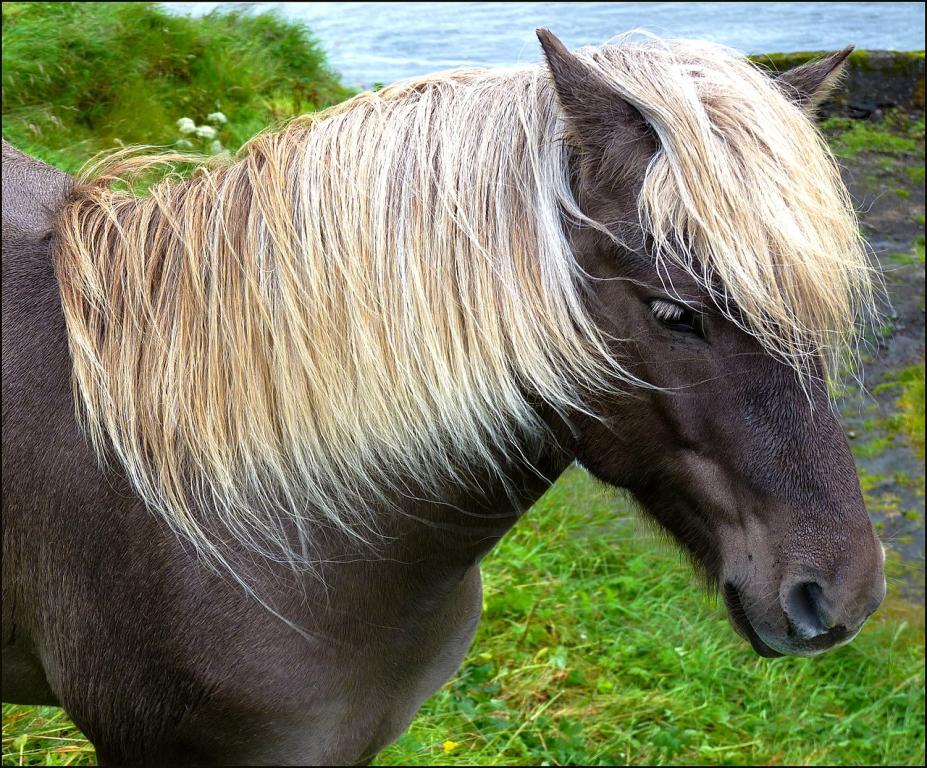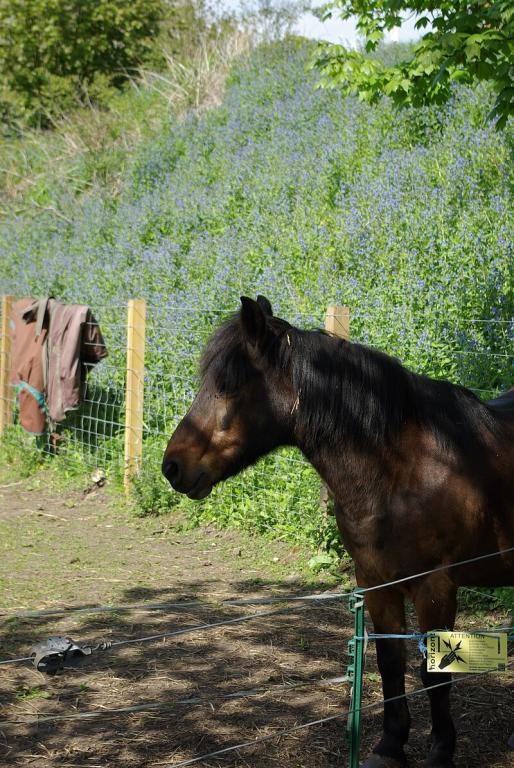
Continent: Europe
Country: Denmark
Weight: 250 – 300 kg
Height: 115 – 125 cm


The pony has been present in the Faroe Islands for over 1,000 years, likely introduced by Viking settlers as early as the 9th century.
It is believed to descend from small Scandinavian horses (such as Norwegian or Icelandic ponies), themselves originating from ancient Celtic and Nordic breeds.
The breed naturally adapted to the archipelago’s extreme conditions: strong winds, rugged terrain, and a humid climate.
This natural selection shaped a hardy, resilient, and frugal pony, capable of living outdoors in freedom throughout the year.
All 18 islands of the archipelago are home to Faroese ponies, but breeding is concentrated on the largest islands:
- Streymoy (main island, capital Tórshavn)
- Eysturoy (second largest)
- Vágar (home to the airport)
- Saudoy and Suðuroy (further south)
Breeding is often done by families or associations, with a limited number of broodmares and carefully selected stallions.
The association Felagið Føroysk Ross oversees breeding and reproduction, with a focus on genetic preservation.
Small stud farms dedicated to reproduction exist, particularly on Streymoy, where ponies are often raised in semi-liberty.
The insularity of the Faroe Islands allowed for isolated evolution, with very little introduction of foreign blood.
Recent genetic studies confirm a limited but unique diversity, which justifies its recognition as a distinct breed.
The Faroese pony is one of the oldest Nordic breeds, having remained genetically isolated for centuries within the archipelago.
It retains original traits that have disappeared or become diluted in other Nordic or Celtic breeds (such as the Icelandic or Shetland ponies).
Genetically, it stands as a rare example of natural selection in a humid subarctic climate, showing:
- Cold and moisture tolerance
- Efficient metabolism (frugality)
- Naturally strong hooves
- High longevity and fertility
Despite a genetic bottleneck in the 1970s, Faroese ponies have preserved distinct lineages.
They represent a valuable genetic reservoir for research in animal conservation, environmental resilience, and hardiness.
Recognized by NordGen (Nordic Genetic Resource Center) as a priority genetic resource for conservation.
The breed is included in Nordic cryoconservation programs (semen, DNA) to ensure its long-term preservation and potential future use.
The Faroe Islands Pony is a unique and irreplaceable genetic resource: vital for Northern European equine diversity, studies on climate adaptation, and as a model of rusticity and dietary efficiency.
The Faroe Islands Pony has a thousand-year-old history, closely linked to that of the archipelago and its people. It is one of the oldest Nordic horse breeds, shaped by geographic isolation and harsh climatic conditions.
It was introduced around the 9th century by Viking settlers.
It is believed to descend from small Celtic and Scandinavian horses, especially those from the Shetland Islands, Norway, and Iceland.
It adapted to island life, including a harsh climate, rugged terrain, and a frugal diet.
The pony was ubiquitous in Faroese agriculture until the early 20th century.
In the 19th century, several hundred ponies were exported to England to work in coal mines.
In the 20th century, mechanization led to a sharp population decline. The pony was gradually abandoned.
By the 1960s–70s, the breed was nearly extinct, with only five breeding stallions remaining.
In 1978, the association Felagið Føroysk Ross was founded to preserve the breed.
A stud-book was established, bloodlines were monitored, births were supervised, and efforts were made to combat inbreeding.
Since the 2000s:
- DNA analyses and genetic sampling
- Cryoconservation programs (semen and tissue)
- Launch of Føroya Fongur (online database, 2018)
- Partnership with NordGen (Nordic Genetic Resource Center)
As of 2020, fewer than 100 ponies remained, but the population is slowly increasing.
The Faroe Islands Pony is known for its balanced temperament, a result of long evolution in freedom under challenging climatic conditions.
Its behavior reflects a mix of rusticity, intelligence, and a strong bond with humans.
- Calm and steady: not nervous, tolerates noisy or unpredictable environments well.
- Hardy and independent: used to living in freedom or semi-freedom, it develops a strong sense of orientation and survival.
- Frugal and enduring: adapted to simple living conditions.
- Very close to humans when educated with gentleness.
- Cooperative: often used for children’s riding or in educational contexts.
- Curious, intelligent, and capable of initiative (can open gates or anticipate routines).
- Lived for generations in free herds: has a strong social sense.
- Stable hierarchy and marked gregarious behavior: ideal for free-range breeding.
- Not aggressive, even among males, as long as space is sufficient.
- Versatile: suitable for trekking, light driving, educational activities, or even animal-assisted therapy.
- Quick to learn.
- Adapts well to new environments, despite its insular origins.
The Faroe Islands Pony is now extremely rare, but is gaining growing awareness both locally and internationally.
Here are the main short- and long-term prospects:
- The breed nearly went extinct in the 1960s–1970s, with fewer than five breeding stallions remaining.
Since the 2000s, sustained efforts have made progress, including:
- The creation of an official stud-book (since 1978)
- Implementation of controlled breeding programs
- Launch of the digital registry “Føroya Fongur” (2018)
- Cryoconservation of DNA and semen
The current goal is to increase the population while avoiding inbreeding.
The pony is now recognized as a Faroese cultural symbol. It is involved in educational, touristic, and environmental programs (gentle riding, cultural events, ecological farming). In the future, it may benefit from protected status at the European level.
Key challenge: Strengthening national pride and the pony’s local utility.
The total population remains under 100 breeding individuals.
Ongoing risks include:
- Low genetic diversity
- Limited financial resources
- Land pressure and changing agricultural land use
- Lack of commercial appeal
- The breed remains classified as critically endangered
The Faroe Islands Pony is renowned for its natural hardiness and exceptional resistance to the harsh climatic conditions of its native archipelago.
Its health is generally excellent, with few breed-specific pathologies.
It shows remarkable resilience to cold, humidity, and wind, inherited from centuries of living outdoors. It can live year-round in semi-freedom, even in a subarctic Atlantic climate.
Excellent longevity: some ponies live beyond 30 years.
Rarely affected by known genetic diseases, thanks to very strict natural selection.
Like all Nordic equines, it is sensitive to:
- Overfeeding (risk of laminitis if fed too richly)
- Lack of exercise in captivity